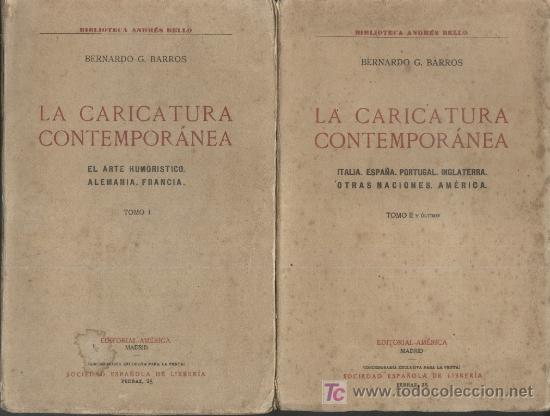4.4.6 Newspaper chronicles and essays by Bernardo G. Barros (1890 – 1922)

Bernardo G. Barros was a pioneer of modern journalistic chronicles, as well as of studies on graphic humor. In this sense, his purpose, and one of the tasks of every artistic work, according to his conceptions, was always to communicate with the reader/viewer, although he hoped for an approach from the public, maintaining the level of intellectuality to which, like many contemporaries, he attributed the right to direct society.
His best-known and most significant work is entitled “Contemporary Caricature,” published in 1918, in which he expresses his aesthetic concepts and elevates this aspect to a greater level than had been previously granted, while also offering a journey through the history of the genre on the island.
His most consistent work, however, particularly on art and literature, was displayed in the sections “On the Margins of New Books” and “Literary Life” in “El Fígaro” and “Heraldo de Cuba,” respectively. These texts, more than thoughtful dissertations, feature impressionistic touches, brief commentaries intended not so much to capture the reader’s attention as to encourage a jump to the works discussed.
His works were generally halfway between essay and journalistic chronicle, about the latter he would say:
“Agile, cheerful, intense at times, always vibrant, captivating and frivolous in its aspect: this is how we should prefer the chronicle. Story or commentary, it will require the most synthetic words and the most precise adjectives. Rhythm and idea, but all fleeting, all on the fly…”
His journalistic work had a didactic tone, also associated with his communicative intent. However, his training was neither academic nor systematic, so he was largely anchored to his early reading and unable to fully interpret some trends in modern art of his time.
He had a vision of literature as an element shaped by and shaping nationality, which is evident in his chronicles, in which he defends a certain insular nature of our productions against foreign penetration, especially North American. He also published texts in “La Discusión,” “El Mundo,” “Diario de la Marina,” “Letras,” “El Mundo ilustrado,” “Revista de Bellas Artes,” “Social,” “Cuba Contemporánea,” “Revista de América,” “El Universal,” and “El Tiempo Ilustrado,” among others.








